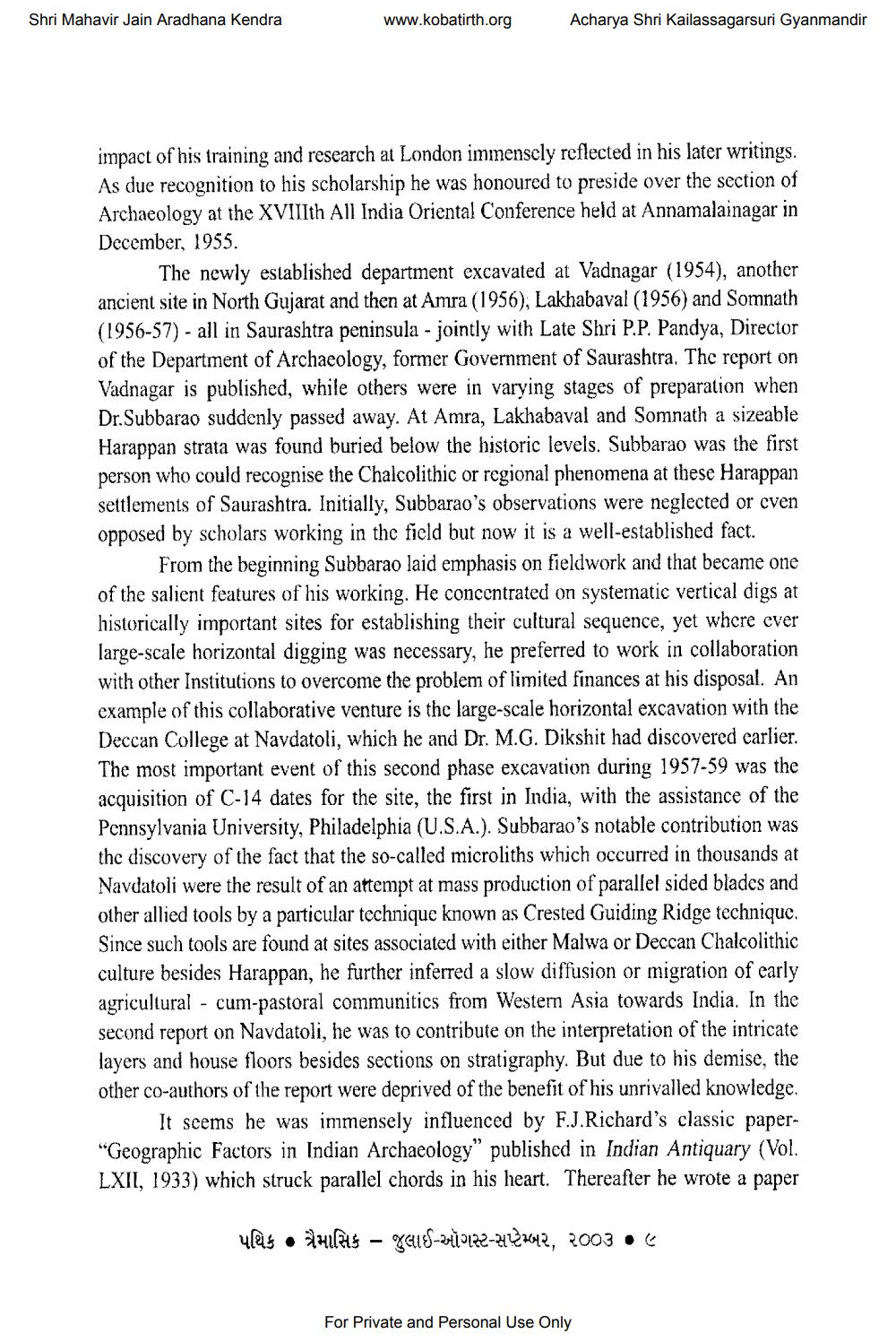________________
Shri Mahavir Jain Aradhana Kendra
www.kobatirth.org
Acharya Shri Kailassagarsuri Gyanmandir
impact of his training and research at London immensely reflected in his later writings. As due recognition to his scholarship he was honoured to preside over the section of Archaeology at the XVIIIth All India Oriental Conference held at Annamalainagar in December, 1955.
The newly established department excavated at Vadnagar (1954), another ancient site in North Gujarat and then at Amra (1956); Lakhabaval (1956) and Somnath (1956-57) - all in Saurashtra peninsula - jointly with Late Shri P.P. Pandya, Director of the Department of Archaeology, former Government of Saurashtra. The report on Vadnagar is published, while others were in varying stages of preparation when Dr.Subbarao suddenly passed away. At Amra, Lakhabaval and Somnath a sizeable Harappan strata was found buried below the historic levels. Subbarao was the first person who could recognise the Chalcolithic or regional phenomena at these Harappan settlements of Saurashtra. Initially, Subbarao's observations were neglected or even opposed by scholars working in the field but now it is a well-established fact.
From the beginning Subbarao laid emphasis on fieldwork and that became one of the salient features of his working. He concentrated on systematic vertical digs at historically important sites for establishing their cultural sequence, yet where ever large-scale horizontal digging was necessary, he preferred to work in collaboration with other Institutions to overcome the problem of limited finances at his disposal. An example of this collaborative venture is the large-scale horizontal excavation with the Deccan College at Navdatoli, which he and Dr. M.G. Dikshit had discovered earlier. The most important event of this second phase excavation during 1957-59 was the acquisition of C-14 dates for the site, the first in India, with the assistance of the Pennsylvania University, Philadelphia (U.S.A.). Subbarao's notable contribution was the discovery of the fact that the so-called microliths which occurred in thousands at Navdatoli were the result of an attempt at mass production of parallel sided blades and other allied tools by a particular technique known as Crested Guiding Ridge technique. Since such tools are found at sites associated with either Malwa or Deccan Chalcolithic culture besides Harappan, he further inferred a slow diffusion or migration of early agricultural - cum-pastoral communities from Western Asia towards India. In the second report on Navdatoli, he was to contribute on the interpretation of the intricate layers and house floors besides sections on stratigraphy. But due to his demise, the other co-authors of the report were deprived of the benefit of his unrivalled knowledge.
It seems he was immensely influenced by F.J.Richard's classic paper"Geographic Factors in Indian Archaeology” published in Indian Antiquary (Vol. LXII, 1933) which struck parallel chords in his heart. Thereafter he wrote a paper
ulas • SHULAS - JUUS-zrū0122-242442, 2003 •
For Private and Personal Use Only




